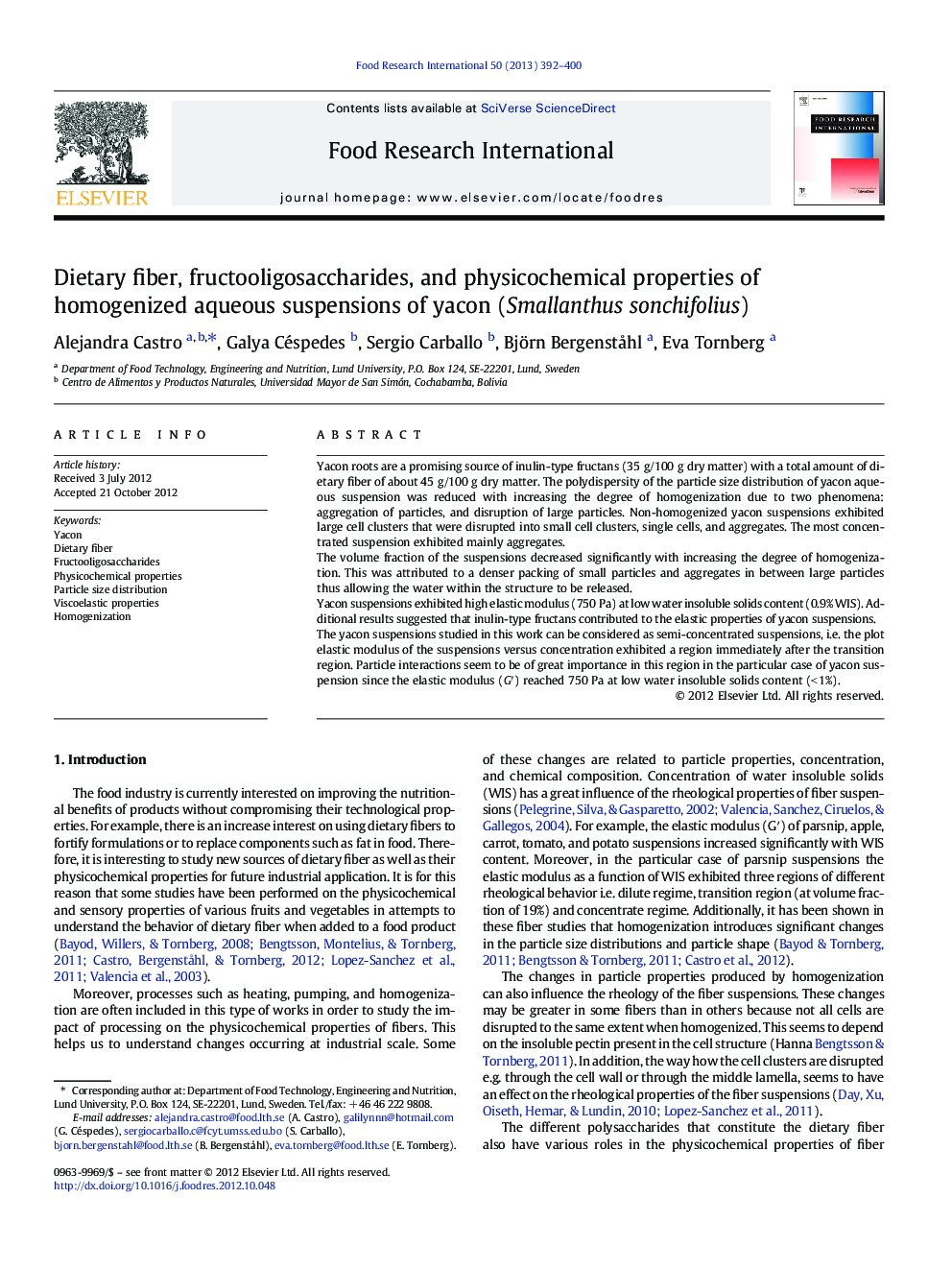| Article ID | Journal | Published Year | Pages | File Type |
|---|---|---|---|---|
| 6398913 | Food Research International | 2013 | 9 Pages |
Yacon roots are a promising source of inulinÂtype fructans (35Â g/100Â g dry matter) with a total amount of dietary fiber of about 45Â g/100Â g dry matter. The polydispersity of the particle size distribution of yacon aqueous suspension was reduced with increasing the degree of homogenization due to two phenomena: aggregation of particles, and disruption of large particles. NonÂhomogenized yacon suspensions exhibited large cell clusters that were disrupted into small cell clusters, single cells, and aggregates. The most concentrated suspension exhibited mainly aggregates.The volume fraction of the suspensions decreased significantly with increasing the degree of homogenization. This was attributed to a denser packing of small particles and aggregates in between large particles thus allowing the water within the structure to be released.Yacon suspensions exhibited high elastic modulus (750Â Pa) at low water insoluble solids content (0.9% WIS). Additional results suggested that inulinÂtype fructans contributed to the elastic properties of yacon suspensions.The yacon suspensions studied in this work can be considered as semiÂconcentrated suspensions, i.e. the plot elastic modulus of the suspensions versus concentration exhibited a region immediately after the transition region. Particle interactions seem to be of great importance in this region in the particular case of yacon suspension since the elastic modulus (Gâ²) reached 750Â Pa at low water insoluble solids content (<Â 1%).
⺠High content of inulin-type fructans and dietary fiber in yacon. ⺠Homogenization reduced polydispersity by two phenomena: aggregation and disruption. ⺠The elastic modulus (Gâ²) reached 750 Pa at low insoluble solids content (< 1%). ⺠InulinÂtype fructans contributed to the elastic properties of yacon suspensions. ⺠Yacon suspensions can be considered as semiÂconcentrated systems.
